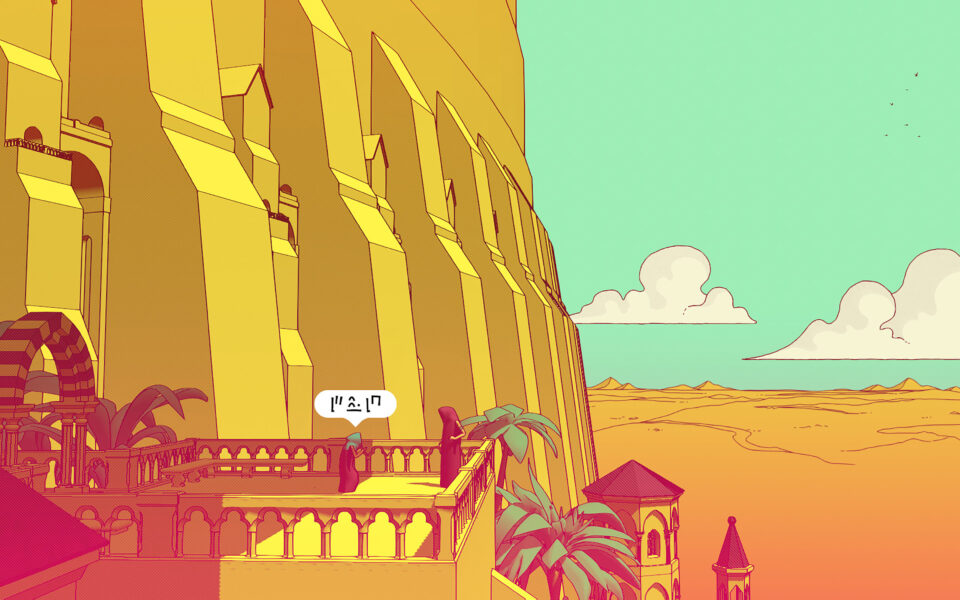Best video games of 2023

The return of beloved characters along with ambitious new titles turned this year into one of the video game industry’s best, leaving players with an embarrassment of riches.
Even during traditionally sleepy months, players had the opportunity to navigate the galaxies of Starfield, embark on the high-fantasy adventures of Baldur’s Gate 3 and battle the monstrous forces of Diablo IV. Long development cycles and a willingness to take risks with gameplay and narrative paid off creatively during what was a grueling season of layoffs, mergers and cutbacks within the industry.
Despite those setbacks, video games remain an innovative sector of culture, with critics giving this year’s slate of releases the best review scores in the past 20 years. These games, listed in alphabetical order, excelled at providing players with immersive experiences.
Alan Wake 2
Weirdness should be rewarded, and the Finnish developers at Remedy Entertainment have clearly embraced the edges of what players can expect from a survival horror game. The offbeat style that concerned publishers when the original game released in 2010 returns in this sequel about an author of crime thrillers who keeps treading between fact and fiction, where the lines between reality and illusion blur. Players will find themselves solving murders and dodging bullets, only to later enjoy an extended musical act by a live-action band called the Old Gods of Asgard. (PC, Sony PlayStation 5, Xbox Series X|S)
Baldur’s Gate 3
The developers at Larian Studios in Belgium engineered a love letter to the tabletop Dungeons & Dragons series that prioritizes customizability and surprise. The vampires, shape-shifters, dwarfs and goblins that populate the world of Baldur’s Gate 3 regularly deliver zingers that make every moment of this titanic story a joy to experience. Online multiplayer has also made this game a fan favorite, with dozens of streamers broadcasting their successes and failures to a growing community. (PC, PS5)
Chants of Sennaar
A shrouded figure emerges from a coffin, navigating a series of dungeon puzzles whose instructions are written in a language that players cannot decipher – yet. Chants of Sennaar, from French developer Rundisc, is a wonderfully inventive game that plays on the idea of being lost in translation. The cel-shaded artistic direction seems to evoke the Moorish influences of the palace of Alhambra, creating a meditative maze of castles and gardens that hides a darker secret. The disorientation forces players to rely on a pictorial journal where images and words are connected into a makeshift lexicon. Building that dictionary feels like mastering a new language. (Nintendo Switch, PC, PS4, PS5, Xbox One, Xbox Series X|S)
Dave the Diver
Sushi and scuba are only appetizers in this oddball game from South Korean developer Mintrocket that is set in an oceanside haunt, where a giant octopus is terrifying the local fishermen. That is the first of many mysteries awaiting Dave, an unlikely hero who becomes a seaside MacGyver responsible for running a restaurant and overseeing several farms. He also moonlights as a social media manager, sea horse trainer and underwater archaeologist. (PC, Switch)
Final Fantasy XVI
The flagship franchise of Japanese developer Square Enix was going through something of an identity crisis – what exactly defines a Final Fantasy title? – when the 16th mainline entry arrived. This one takes place in a high-fantasy setting, where kingdoms scheme against one another in a war inspired by the HBO series “Game of Thrones.” The resulting epic contains a tragic hero’s quest but also mundane side quests spent retrieving wildflowers and other meaningless items. Elements of political intrigue and a subplot involving enslaved magic bearers are eventually overshadowed by an evil god and behemoths known as eikons that lead the protagonist into fights recalling the showdowns between Godzilla and Mothra. But even within its messy later acts, there are shimmers of brilliance found in every Final Fantasy title. (PS5)
The Legend of Zelda: Tears of the Kingdom
A direct sequel to Breath of the Wild, one of the most celebrated games of the past decade, created high expectations for Nintendo. The resulting adventure saw the industrial revolution come to Hyrule, where players learned to combine relics scattered across the ruined kingdom into motorcycles and airplanes. Tears of the Kingdom slightly disappointed those craving more narrative depth from the series, but the Japanese team’s inventive approach to environmental puzzles remains unparalleled. Trusting players to conquer open-ended challenges with a seemingly infinite number of solutions (and roads to failure) has kept The Legend of Zelda one of the industry’s biggest franchises. (Switch)
Pikmin 4
There have been substantial changes to the Pikmin formula in what might be considered a reboot for the Nintendo series, which has struggled to find a mainstream audience. This entry stands out by streamlining mechanics and combining some of the best features of the first three games, which focus on leading armies of Pikmin – alien plant creatures – to multiply their numbers, collect treasures and battle local invasive species. All the action happens from the ground level as players navigate a crew of space explorers no larger than ants. (Switch)
Resident Evil 4
When it started revisiting older games in its Resident Evil catalog, Japanese developer Capcom knew that expectations for one particular entry would be preposterously high. Since its release in the mid-2000s, Resident Evil 4 has been considered by some as one of the greatest video games ever released. The remake is a reminder of why the horror series reigns supreme, bringing new features and unexpected jump scares. A balance of bloody horror and campy jokes from the protagonist, Leon Kennedy, almost softens the sheer terror of zombie villagers infected by a mind-controlling parasite chasing you through the countryside of Spain. (PC, PS4, PS5, Xbox Series X|S)
Spider-Man 2
The developers at Insomniac Games, an American studio, were poised to deliver more of the same after its 2018 game Spider-Man seemed to perfect the gameplay loop of a web-slinging superhero with a realistic map of Manhattan to explore. Players were left to happily swing across the city long after they completed the main story. Its sequel delivered more of the same while improving on some of its predecessor’s rough edges. The superhero has extended his jurisdiction to Brooklyn and Queens, more villains are destroying the skyline, and a partnership between Peter Parker and Miles Morales becomes strained as the elder Spidey’s mind is corrupted by the alien evildoer Venom. (PS5)
Viewfinder
Playing this game will open your third eye. The puzzles involve perspective-shifting gimmicks that employ trick photography to distort time and space. Developers at the Scottish company Sad Owl Studios have players use a camera to open rifts in the environment, resulting in worlds that sometimes look ripped from an M.C. Escher illustration. Taking some of its ambience and thematic cues from other prestigious puzzlers – including Portal (2007), The Witness (2016) and Superliminal (2019) – Viewfinder does not overstay its welcome, leaving players eager to dive farther into its world’s many mysteries. (PC, PS5)
This article originally appeared in The New York Times.






